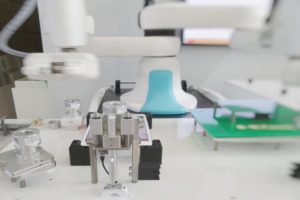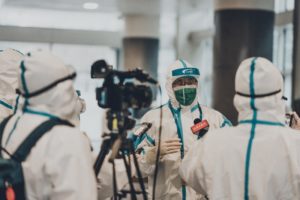
As the digital drive gains steam during the pandemic, Thailand must capitalise by turning into a global tech hub, the President of the Digital Council of Thailand (DCT) stated.
Another expert stated that the world is likely to recover fast after the outbreak subsides, due to globalisation and the push for technological and digital development.
A new economy will emerge as people’s behaviour changes.
Thailand needs to prepare for transformation to the new economy, the expert, who is also Board Chairman of telecom operator True Corporation, stated.
Thailand must dare to change with the target of bringing the country to serve as the new technology hub of the world.
The DCT aims to push towards a new economy through five approaches.
First, new indicators for the country’s development must be sought. For example, the country’s digital infrastructure must not be gauged by the ratio of computers or mobile phones to the population.
There should be indicators of people’s capability in technological and digital access, such as English and Chinese proficiency, as new knowledge mostly comes from countries that use these languages.
Second, cooperation between state, private, academic and civic sectors must be created with a clear goal of pushing the country out of the middle-income trap.
In the past, they worked separately with different objectives.
Third, efforts must be made to create digital manpower through upskilling or reskilling of new graduates, currently numbering 500,000.
They must have new skills consistent with global demand.
Fourth, digitalisation must be underscored. Industries and start-ups must be alerted and prepared for fast change, particularly the adoption of digital technology within organisations.
Fifth, efforts must be made to turn Thailand into a trade and investment hub, drawing talent to the country from around the world.
A strategy must be laid out to enable Thailand to serve as the regional hub for investment.
To reach the goal, Thailand must have an ecosystem conducive to trade and investment, supported by technology and digital advancement.
And while talent from outside the country is needed, Thai universities should be encouraged to produce more technologically proficient graduates.
In October 2019, The Digital Council of Thailand (DCT) announced that it is working with the Federation of Thai Industries (FTI) to turn the country into a digital innovation hub in ASEAN through the development of data centres and artificial intelligence (AI) capability.
The two organisations plan to drive digital transformation as well as reskill and upskill the digital workforce to be ready to cope with digital disruption and upcoming 5G adoption.
DCT’s vision is to improve the digital industry to be at the forefront of the digital economy and social development in the world.
To become a digital innovation hub, the country first needs to have a carrier-neutral data centre, Mr Suphachai said. It must include data residency for AI analytics capability.
Thailand aims to be an early adopter of 5G in Asia.
The upcoming 5G adoption will make more bandwidth available and accelerate the use of the Internet of Things and data analytics.
The Thai Chamber of Commerce, DCT and FTI have agreed to establish a data centre. The Thai Bankers’ Association will be invited to help create one for the benefit of the country.
There needs to be cooperation between the public and private sectors. For example, the government must provide incentives for small and medium-sized enterprises (SMEs) to enhance their digital capability.





















